
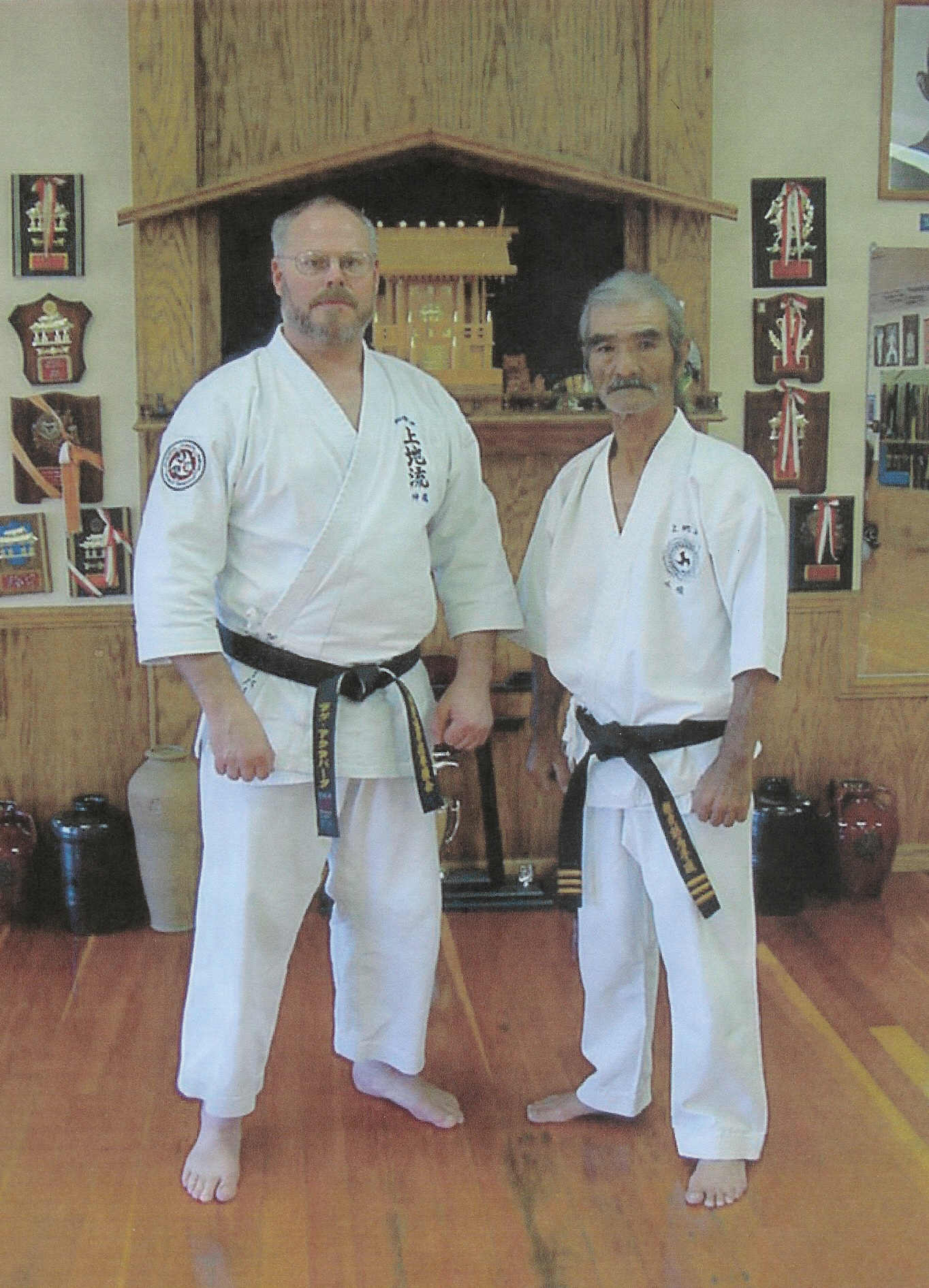

Kobudo
(Weapons)



Master Matzakazu Kinjo Master Shinyu Gushi
Ryu kyu Kobudo Hozonkai Ryukokaku Kobudo
The History of Kobudo
Kobudo is an Okinawan term that refers to
Kobujutsu or, ancient weapon art.
In 1477, during the Second Sho Dynasty, swords and other weapons were banned
from Okinawa and the Ryukyu islands by Emperor Shoshin. All weapons on the
island were collected and garrisoned in his royal castle in Shuri on Okinawa. It
was as a direct result of Shoshin's edict that Okinawan's turned to the
development of karate (open hand) fighting. Although kobudo weapons are not
really a part of karate, their development has shadowed the development and
evolution of karate to the degree that they are almost inseparable.
In 1600 the Japanese invaded and occupied Okinawa. As a conquering army they
used the continued prohibition of weapons as a method of controlling the
population. This was combined with an attitude by the Japanese, that still
permeates the island today, that Okinawans were second class citizens and not as
good as Japanese. (Even today most any Okinawan will quickly inform you - "I am
not Japanese, I am Okinawan!") Therefore only Japanese samurai's were permitted
to own and carry weapons
Okinawan karate further developed from it's Chinese roots. Just as the monks in
china had developed weapons from seemingly innocent items such as the staff, so
to did the Okinawans. These creative farmers and fishers resorted to weaponizing
the implements of their everyday working life. They developed complex weapons
forms for such items as the boat oar (eku), fish net floats (chesen kun bo),
millstone handles (tonfa), top knot pints (jiwa) sickles (kama), saddle stirrups
(tekkos) and the 6 foot staff (bo).
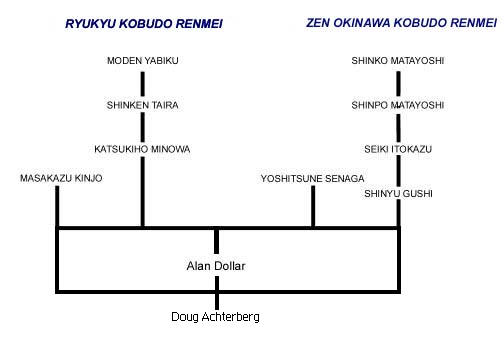
Weapons
Bo
![]()
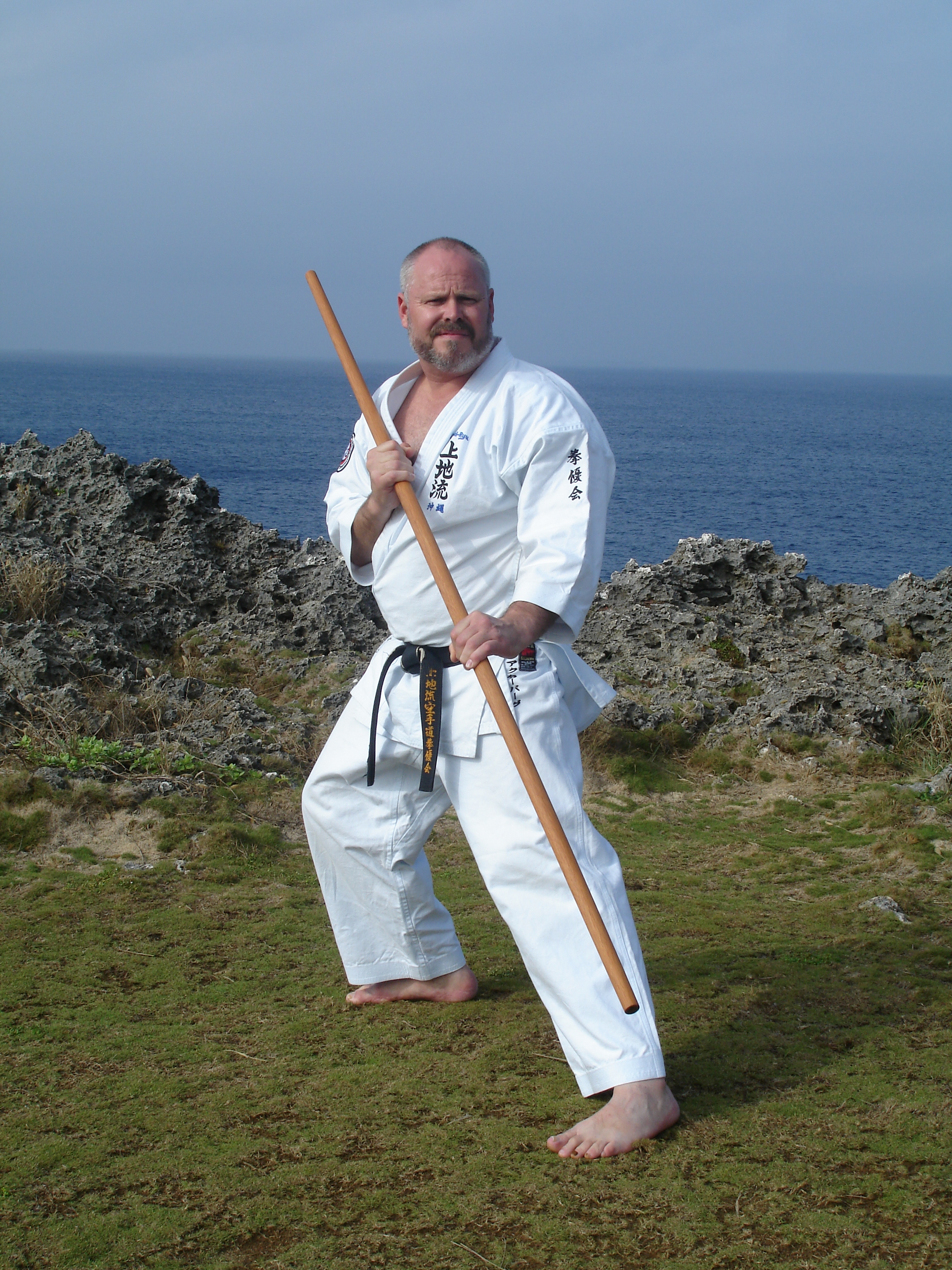
The Bo is another early weapon of Okinawa. It
differed in that it was utilized by peasants, monks and samurai alike. Fashioned
of Okinawan hardwood, the Bo is 6 feet long and 1 1/2 to 2 inches in diameter.
Many present day Bo's taper at the ends. This is probably not the traditional
style as the bo was utilized to carry water buckets and other items. If the
original Bo was indeed tapered at the ends it would have been more difficult to
keep items on it. Because of this original Bos are felt to have been
non-tapered.
The Bo's size makes it a good weapon to use against swords and to disarm an
opponent while allowing the Bo practitioner to remain at a safer distance.
Manipulation of the weapon requires a thorough knowledge of basic karate stances
and techniques
In day-to-day life many articles can be utilized as a Bo-like weapon; a broom or
mop stick, a pool stick, a PVC pipe or even an umbrella. The Bo is also used to
augment physical conditioning and balance.
Sai
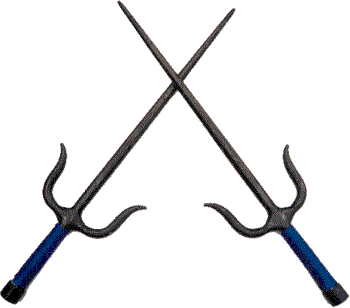
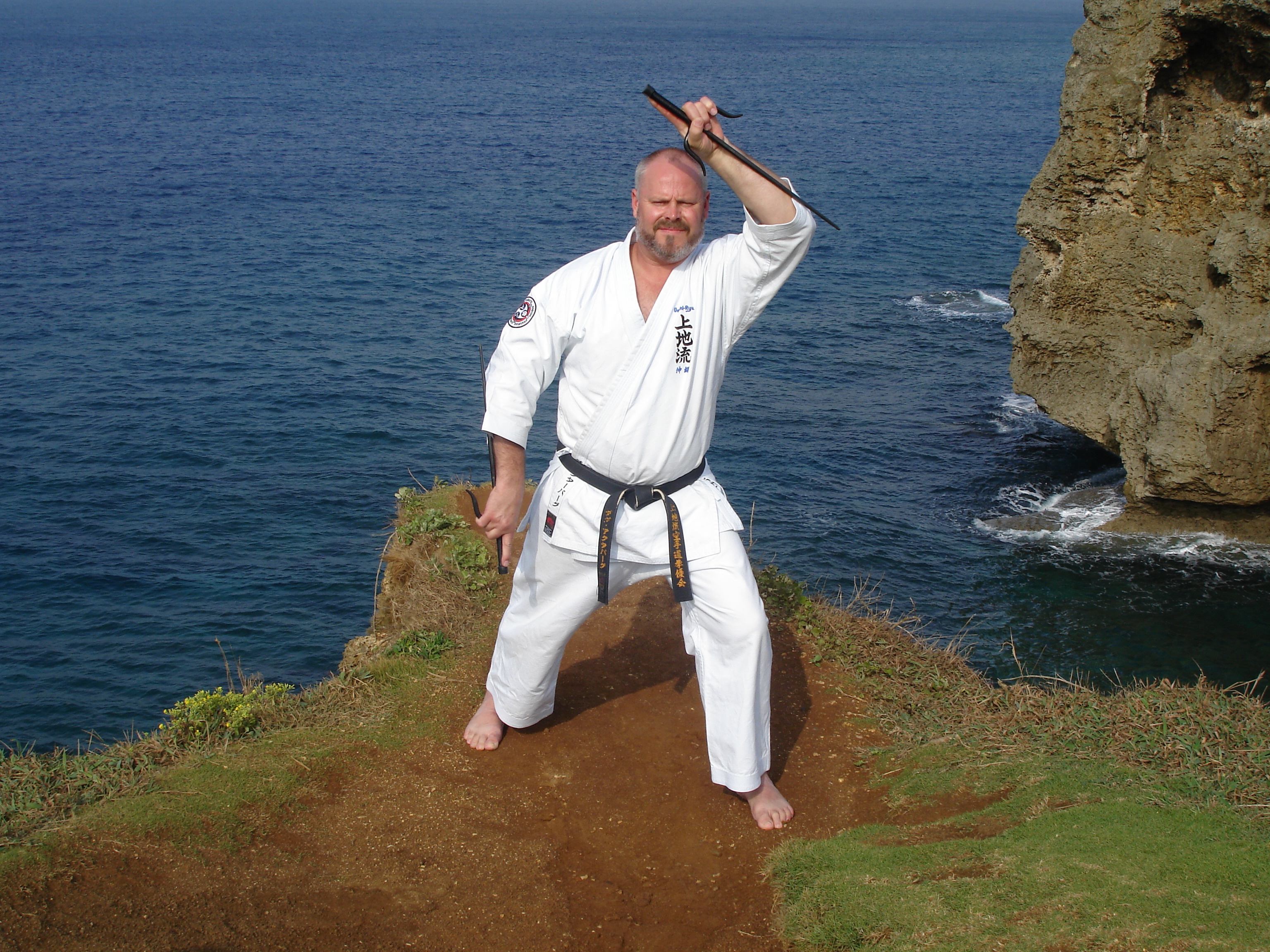
The Sai are found in both
Okinawan and other oriental martial arts schools. Used in sets, the Sai are made
of iron and weigh upwards of 3 pounds each. It can be used to block, stab, trap
or strike. In Okinawa forms developed where the Sai was thrown. When thrown, the
practitioner would frequently carry a third Sai in his belt to replace the
thrown Sai. The pummel on the Sai's handle could be used to block and to crush
(i.e. skull). A Sai could also be attached to a Bo to create a spear.
Originally the Sai was probably a farm implement along the lines of the
pitchfork. It was also carried by police to defend themselves against swords. It
has long been associated with the study of karate.
Modern day Sai's generally have dulled tips and are now used in kata and
demonstrations. Because of it's weight it is also utilized to develop both
strength and coordination.
Eku

The Eku is made from hardwood. It
is shorter than the Bo. In principle the Eku is the same height as the wielder.
The Monouchi extends one-third the length of the eku. The Monouchi has 4
surfaces, the Saki, 2 Yoko, a beveled edge, and a rounded face.
The Eku is uniquely Okinawan. The Eku was a common place oar put to deadly use
by the Okinawan fishermen.
The Eku uses the techniques of the Bo. However, the Eku requires more skill
because of the necessary wrist action needed to use the proper surface. Use of
the Eku requires excellent knowledge of Bo techniques.
The grips for the Eku are similar to the ones for the Bo. The right hand grips
the Eku at the Moto right behind the Monouchi. The left hand is about one
shoulder width down from the right hand. Like the Bo the back hand generates the
power and the front hand is used for guidance and control.
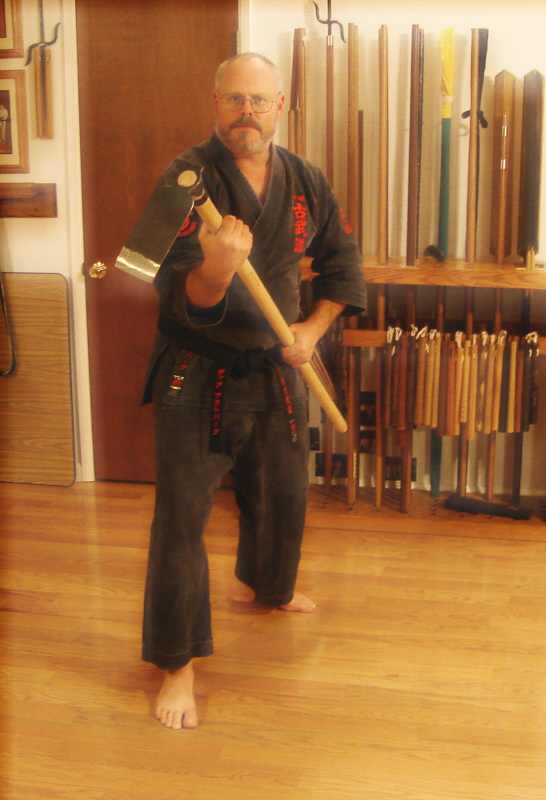
The hoe is common in all agrarian societies; in Okinawa, the kuwa has been also used as a weapon for as long as there have been farmers. Compared to garden-variety hoes, the handle tends to be thicker and usually shorter, both due to Okinawan stature, and the fact that much of the agriculture takes place on hillsides where long handles would be a hindrance. A classic shape of blade is a simple rectangle of steel with a sharp leading edge, but may also be forked with tines.
Nunchaku
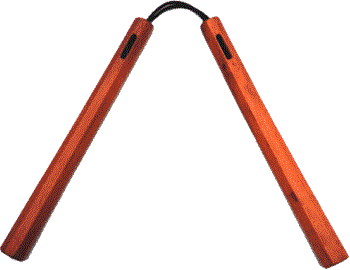
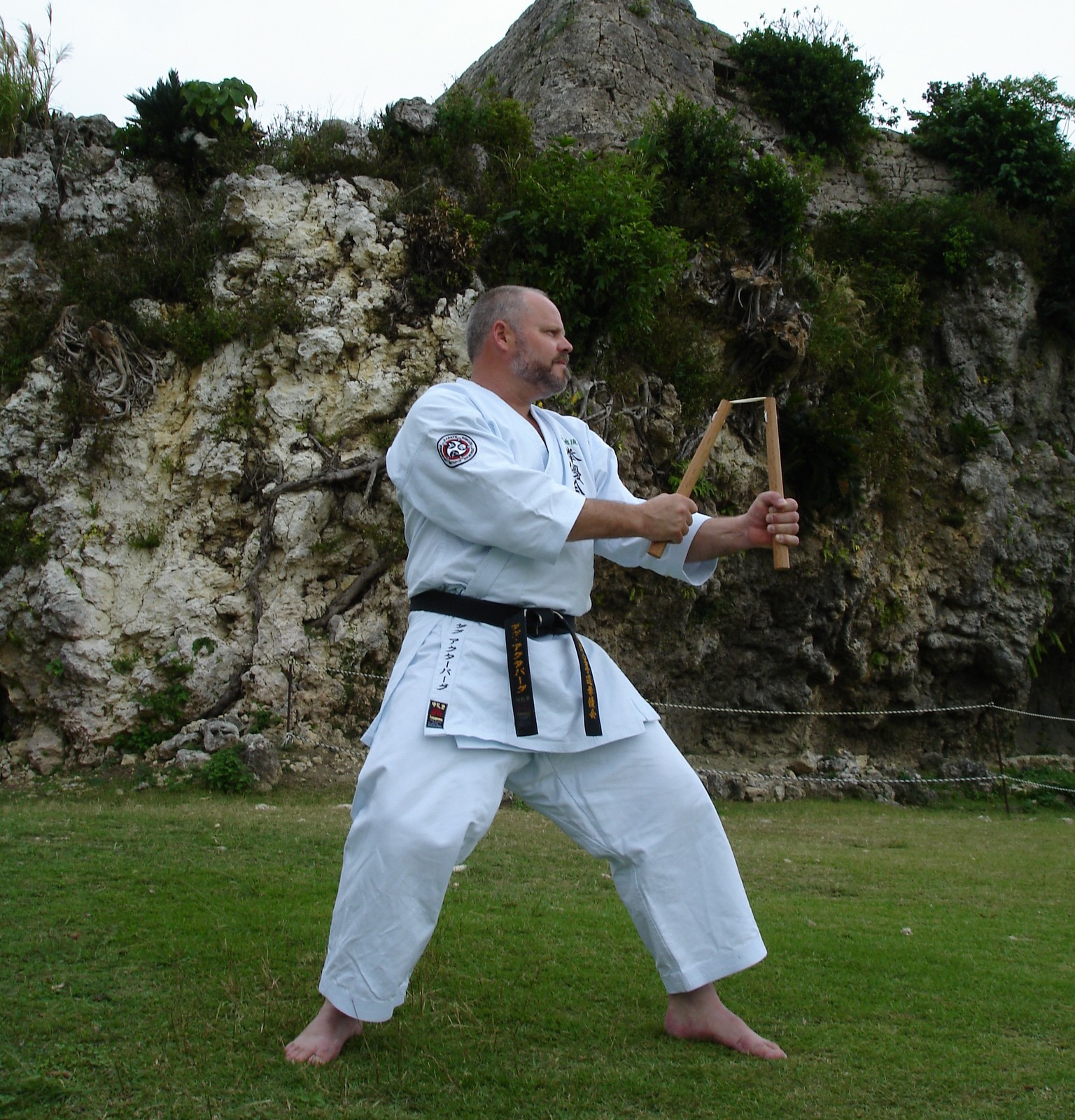
The Nunchaku was originally a
tool for thrashing rice, wheat or other grains. To the Japanese it appeared to
be two harmless wooden sticks connected with a length of rope, braided horse
hair or chain.
The Nunchaku were utilized to strike, block and trap an opponent. Stances
utilized with the Nunchaku were the same as those utilized in karate so, again,
the development of the two closely parallel each other. Use of the Nunchaku
required the martial artist to be equally proficient with either hand. During
it's use the weapons could be switched from one hand to the other as needed.
Most occidentals were introduced to the Nunchaku by Bruce Lee in the 1970s.
Since that time the Nunchaku has been closely aligned to Okinawan and Japanese
karate. It can be a "flashy" weapons and because of this it is frequently seen
in Karate demonstrations. Many police departments carry Nunchakus.
Kama
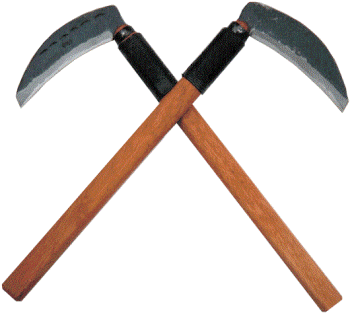
Kama were one of the first
weapons utilized by the Okinawans after the confiscation of their other weapons.
Kamas had long been used as a fighting blade in addition to it's routine farm
uses of cutting grass, rice and sugar cane. The weapon could be utilized to cut,
slice, block and for striking. Another version of this weapon, the kusarigama,
had a length of chain attached to it to increase it's length. However, since
chain was in short supply on the primitive island and the addition of the chain
made the kama more clearly a weapon, it's use was limited.
It is still used as a farm implement in Okinawa. The kamas used are traditional
kamas and not the fancy, aerodynamic titanium and aluminum varieties seen in
flashy demonstrations at some competitions.
Tonfa
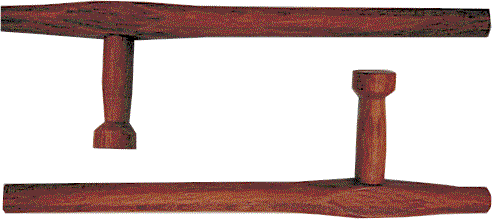
Controversy surround the original
use of the tonfa. It has been referred to as a rice grinder although some
evidence exists to support it's use as a milestone handle. Either way it's use
has also parallel the development of karate.
The tonfa are very effective weapons for striking and blocking. The handle can
be used to twirl the weapon thereby increasing it's reach. The sides of the
weapon are used primarily for blocking and the ends for striking. Although
generally used in pairs it is also an effective weapon when used singularly.
Good evidence of this is seen with the adaptation of the tonfa in a great number
of police departments and correctional facilities around the world.
Jiffa
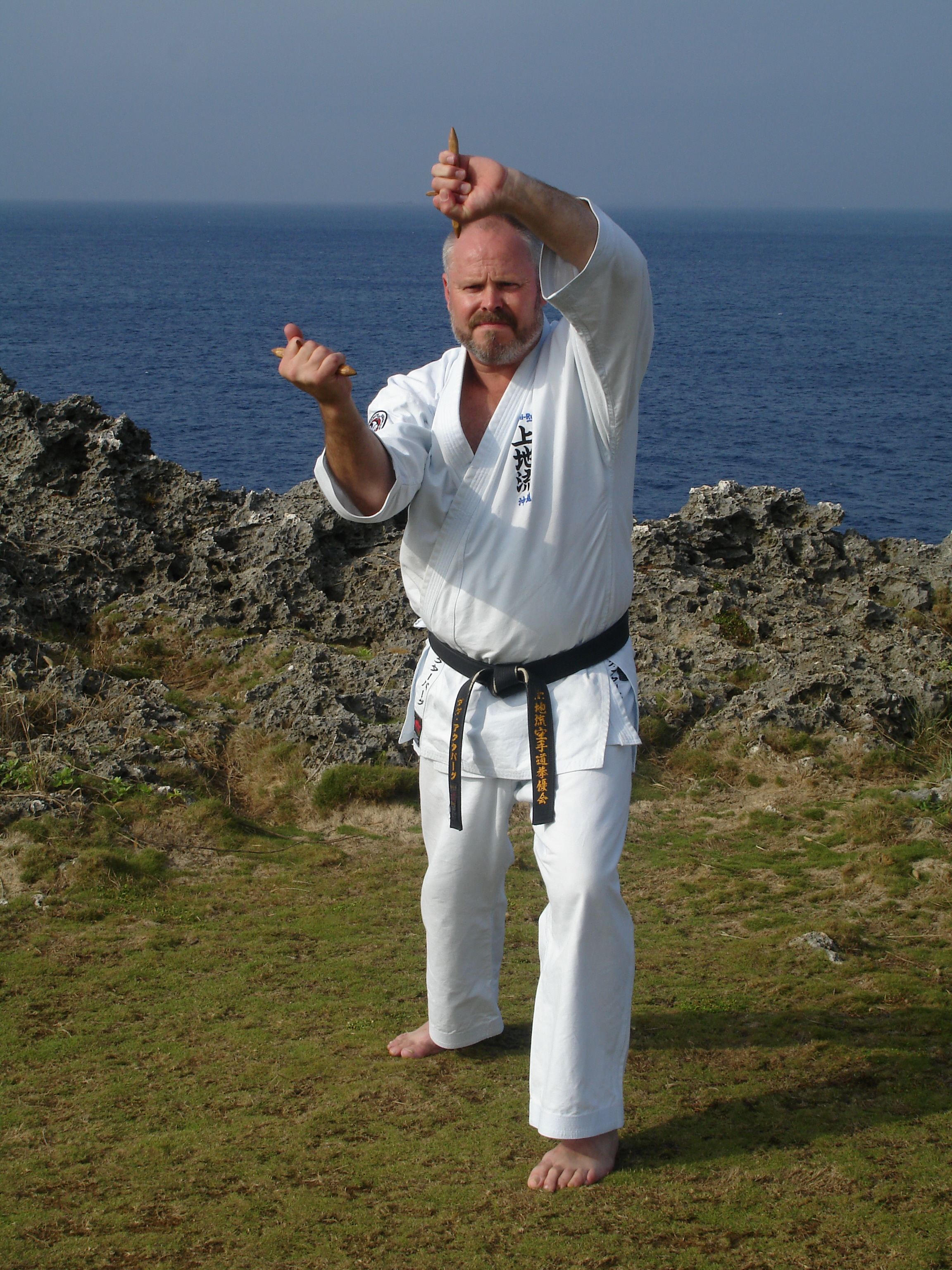
Jiffa, (Kanzashi) the hairpin worn by all Okinawan men until the later part of the 19th century, can be used as a device to augment the power of karate techniques.
Hand made Jiffa, Tetsu, and Nunchucku by Matsukazu Kinjo